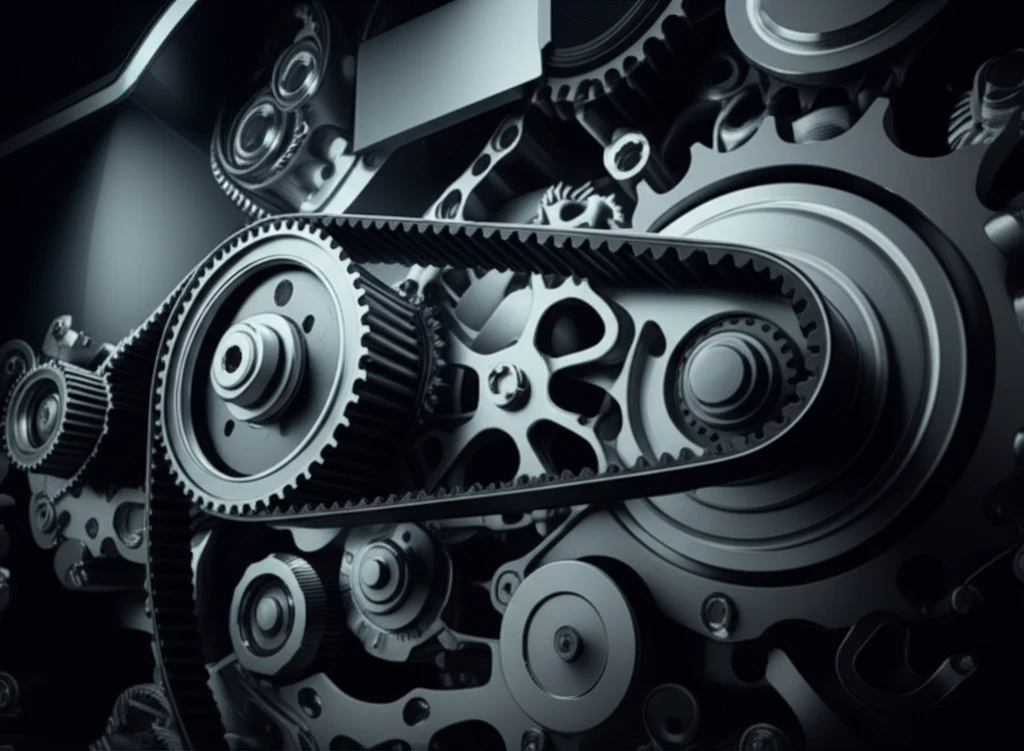
Are Timing Belts the Unsung Heroes of Modern Machinery? A Deep Dive
"Uncover the hidden complexities of timing belt systems and how they impact everything from car engines to conveyor belts."
In the realm of mechanical engineering, certain components operate behind the scenes, playing a crucial role in the functionality of various systems. Among these unsung heroes is the timing belt, a seemingly simple element with a complex job. This article delves into the intricacies of timing belts, exploring their significance in power transmission and conveying systems, as highlighted in recent research.
Timing belts are integral to numerous applications, from automotive engines to industrial conveyor belts. Their primary function is to synchronize the rotation of different shafts, ensuring precise and efficient power transfer. Unlike chains or gears, timing belts offer a quieter operation and don't require lubrication, making them a popular choice in many modern machines.
This exploration will cover the fundamental phenomena occurring at the contact interface between a timing belt and its corresponding pulley, the challenges engineers face in optimizing belt performance, and the innovative solutions being developed to enhance their durability and efficiency. We'll also touch upon the materials used, the impact of friction, and the evolving designs aimed at reducing wear and maximizing the operational life of these critical components.
The Dance Between Belt and Pulley: Understanding the Mechanics

The interaction between a timing belt and a pulley is more intricate than it appears. When a timing belt engages with a pulley, it's not a simple matter of continuous rolling contact. Instead, it involves a complex meshing process where the teeth of the belt engage and disengage with the grooves of the pulley. This meshing action introduces phenomena such as rolling and sliding friction, which contribute to wear and energy loss.
- Material Selection: Choosing materials with inherently low friction properties.
- Tooth Design: Optimizing the shape and geometry of the teeth to reduce impact and sliding.
- Surface Treatment: Applying coatings to reduce friction and wear on the contact surfaces.
The Future of Timing Belts: Innovations on the Horizon
The evolution of timing belt technology is ongoing, with continuous advancements in materials, design, and manufacturing processes. The latest designs are focusing on reducing the friction coefficient to improve performance and longevity. While these new designs often mimic the parameters of chains and are used interchangeably in some applications, it's important to consider the unique properties of belts for specific control and conveying purposes. The future promises even more efficient, durable, and reliable timing belt systems that will continue to play a crucial role in the machines that power our world.
